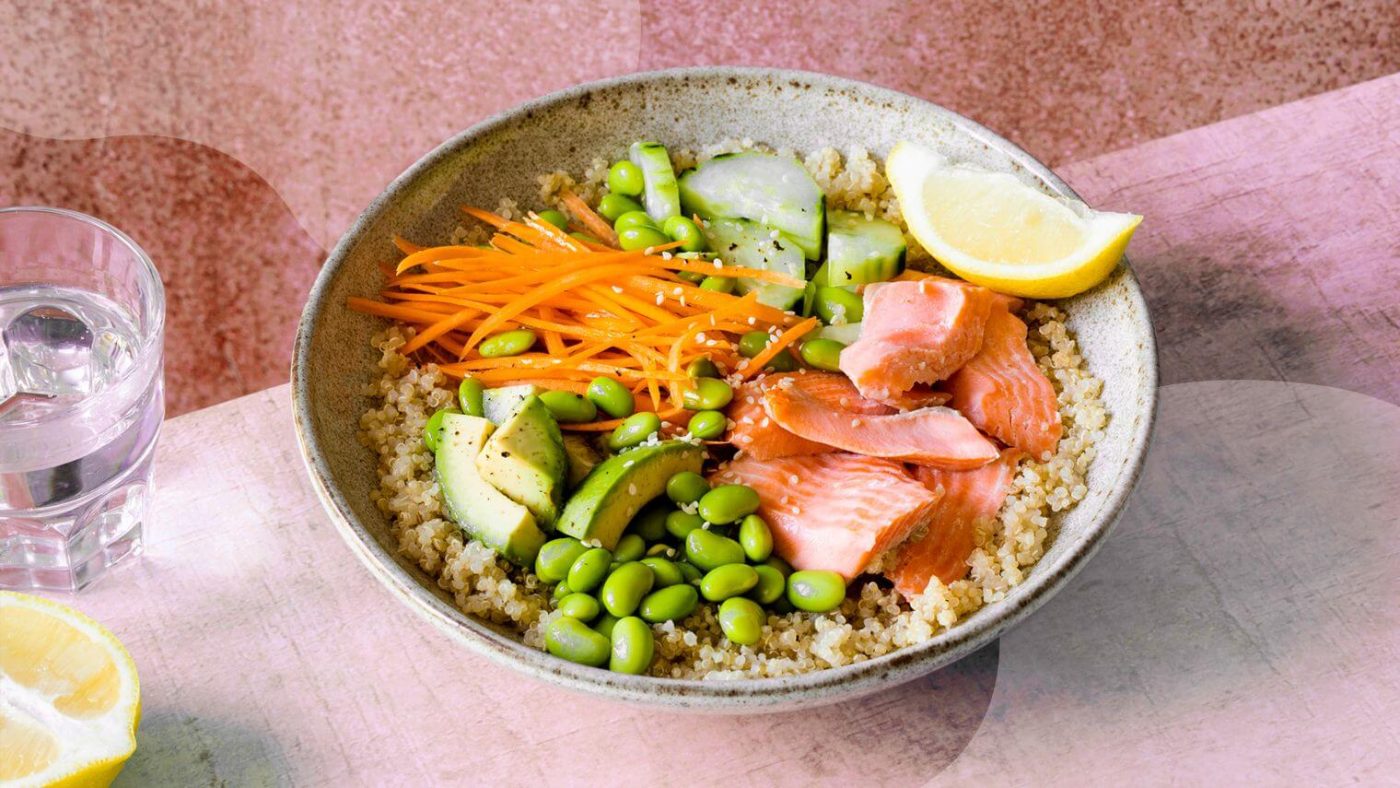World News
How Diet Changes Can Help Lower Your Breast Cancer Risk
Introduction: Understanding the Link Between Diet and Breast Cancer Risk
Breast cancer remains one of the most commonly diagnosed cancers globally, affecting millions of women and men every year. While genetic factors and family history play an important role in a person’s risk for developing breast cancer, lifestyle choices, particularly diet, are powerful modifiable factors that can influence cancer risk. Research has shown that what we eat can impact not only the risk of developing breast cancer but also how our bodies respond to the disease.
The American Cancer Society highlights three key dietary changes that can help lower the risk of breast cancer. These changes are centered around increasing fiber intake, consuming more fruits and vegetables, and reducing processed foods and red meat. This article will explore how these dietary adjustments can make a difference in reducing breast cancer risk, and why each of them is scientifically supported. By understanding the connection between diet and breast cancer, individuals can make informed decisions that support their health and potentially lower their risk of cancer.

Increasing Fiber Intake: A Crucial Step in Breast Cancer Prevention
One of the simplest but most effective changes you can make to your diet to help lower breast cancer risk is increasing your fiber intake. Dietary fiber is found in plant-based foods like fruits, vegetables, whole grains, and legumes. Research has shown that a high-fiber diet can reduce the risk of many types of cancer, including breast cancer.
How Fiber Helps Prevent Breast Cancer
Fiber-rich foods contribute to cancer prevention in several ways. First, they help to regulate hormone levels, particularly estrogen, which can influence the development of hormone receptor-positive breast cancer. High fiber intake can help reduce circulating estrogen levels by improving the metabolism of hormones. Fiber helps the body eliminate excess estrogen through digestion, potentially lowering the risk of estrogen-related cancers.
Fiber also promotes overall digestive health, supporting regular bowel movements and preventing constipation. This helps maintain a healthy gut microbiome, which is increasingly being recognized for its role in preventing chronic diseases, including cancer. A healthy gut can aid in the detoxification process, further lowering the body’s cancer risk. Additionally, fiber slows down the absorption of sugar, helping to maintain healthy blood sugar levels and reduce the risk of obesity, a known risk factor for breast cancer.
High-Fiber Foods to Include in Your Diet
To increase fiber intake, focus on consuming more whole plant-based foods, such as:
- Whole Grains: Brown rice, quinoa, oats, and barley.
- Legumes: Beans, lentils, chickpeas, and peas.
- Fruits: Apples, pears, berries, and oranges.
- Vegetables: Carrots, broccoli, leafy greens, and squash.
- Nuts and Seeds: Almonds, chia seeds, flaxseeds, and walnuts.
Aim to incorporate these fiber-rich foods into every meal, creating a well-rounded and nutrient-dense diet that supports breast cancer prevention.
The Power of Fruits and Vegetables: A Foundation for Healthier Living
In addition to increasing fiber intake, consuming a variety of fruits and vegetables is one of the most important dietary changes you can make to reduce your breast cancer risk. Fruits and vegetables are packed with essential vitamins, minerals, antioxidants, and phytochemicals that help protect the body from oxidative stress, reduce inflammation, and support the immune system.
Antioxidants and Phytochemicals: The Protective Properties
Fruits and vegetables contain antioxidants, which are substances that help neutralize free radicals—unstable molecules that can damage cells and lead to cancer. Free radicals are a natural byproduct of metabolic processes, but exposure to external environmental toxins (such as pollution, cigarette smoke, and UV rays) can increase the production of free radicals. The damage caused by free radicals can affect DNA and lead to mutations that contribute to cancer development.
The antioxidants found in fruits and vegetables, such as vitamins C and E, beta-carotene, and flavonoids, help protect cells from oxidative damage and reduce the risk of cancer. For example, studies have shown that consuming high levels of vitamin C from citrus fruits, strawberries, and bell peppers may help reduce breast cancer risk by reducing oxidative stress and supporting the immune system.
In addition to antioxidants, fruits and vegetables are rich in phytochemicals—bioactive compounds found in plants that may have cancer-fighting properties. These include compounds like carotenoids (found in carrots and tomatoes), flavonoids (found in berries, apples, and onions), and cruciferous vegetable compounds (found in broccoli, cabbage, and kale). These phytochemicals have been shown to inhibit the growth of cancer cells, promote the death of damaged cells, and support the body’s natural detoxification processes.
Recommended Fruits and Vegetables for Breast Cancer Prevention
To maximize the cancer-protective benefits of fruits and vegetables, aim to consume a variety of colorful produce. Each color represents different types of antioxidants and phytochemicals. The following foods are particularly beneficial for breast cancer prevention:
- Berries: Blueberries, strawberries, raspberries, and blackberries are rich in antioxidants, including anthocyanins, which may help reduce oxidative stress and inflammation.
- Cruciferous Vegetables: Broccoli, Brussels sprouts, kale, and cabbage are high in sulforaphane, a phytochemical that has been shown to inhibit cancer cell growth.
- Leafy Greens: Spinach, kale, and collard greens provide fiber, vitamins, and antioxidants, which help detoxify the body and reduce inflammation.
- Citrus Fruits: Oranges, grapefruits, lemons, and limes are excellent sources of vitamin C and flavonoids, which help reduce oxidative damage to cells.
Aim to include a variety of fruits and vegetables in your daily meals, making them a core part of your diet to help lower your breast cancer risk.

Reducing Processed Foods and Red Meat: Cutting Out Cancer-Causing Elements
In addition to increasing fiber and consuming more fruits and vegetables, one of the most effective ways to reduce breast cancer risk is to cut back on processed foods and red meat. Studies have shown that diets high in processed meats (such as bacon, sausages, and hot dogs) and red meat (beef, pork, and lamb) are linked to an increased risk of several cancers, including breast cancer.
The Cancer-Causing Properties of Processed Meats
Processed meats are those that have been altered through smoking, curing, salting, or the addition of preservatives to enhance flavor or prolong shelf life. Unfortunately, these meats often contain harmful chemicals, such as nitrates and nitrites, which have been shown to increase the risk of cancer. During the cooking process, especially when meats are grilled or fried at high temperatures, these chemicals can form carcinogenic compounds that damage DNA and increase cancer risk.
In addition, processed meats tend to be high in saturated fats and sodium, both of which can negatively affect heart health and contribute to weight gain and obesity—another risk factor for breast cancer. The World Health Organization (WHO) has classified processed meats as a carcinogen, meaning they are known to cause cancer in humans.
Red Meat and Cancer Risk
Red meat, while not as directly linked to cancer as processed meats, still poses a risk when consumed in large quantities. Studies have shown that high consumption of red meat can increase the risk of breast cancer, particularly in postmenopausal women. Red meat is rich in heme iron, which can promote the production of free radicals and oxidative damage in the body. Additionally, the cooking process of red meat at high temperatures can produce heterocyclic amines (HCAs), chemicals that have been shown to cause cancer in animal studies.
Alternatives to Processed Meats and Red Meat
To reduce the intake of processed and red meats, try incorporating plant-based protein sources into your diet. These include:
- Legumes: Beans, lentils, and chickpeas.
- Tofu and Tempeh: Soy-based products that are rich in protein and low in fat.
- Nuts and Seeds: Almonds, walnuts, chia seeds, and flaxseeds.
- Fish: Fatty fish such as salmon, sardines, and mackerel, which are rich in omega-3 fatty acids and have cancer-protective properties.
Additionally, lean poultry, such as chicken or turkey, can be consumed in moderation as a healthier alternative to red and processed meats.
Conclusion: A Holistic Approach to Lowering Breast Cancer Risk Through Diet
Making dietary changes is one of the most powerful tools in reducing breast cancer risk. By increasing fiber intake, consuming more fruits and vegetables, and reducing processed foods and red meat, individuals can lower their risk of developing breast cancer while simultaneously improving their overall health. These diet changes not only help protect against cancer but also support immune function, reduce inflammation, and promote a healthy weight—all factors that contribute to a lower cancer risk.
A balanced diet rich in plant-based foods and healthy fats is essential for cancer prevention, and these changes are beneficial at any age. Whether you’re looking to lower your breast cancer risk or improve your health in general, adopting these dietary changes can make a significant difference. Remember, it’s not about perfection—small, sustainable changes over time can have a lasting impact on your health.
By embracing a healthy, nutrient-dense diet, you are taking proactive steps toward better health and potentially lowering your risk of breast cancer. With continued research into the relationship between diet and cancer, we continue to gain valuable insights into how lifestyle choices, especially nutrition, can influence our long-term well-being.
From Ecomhao

